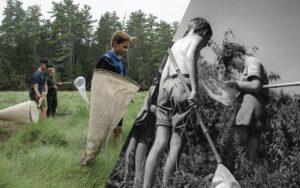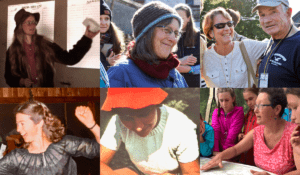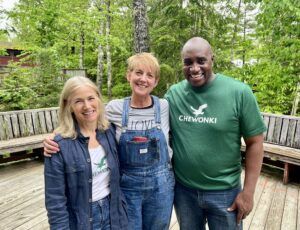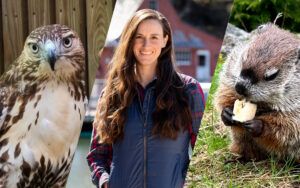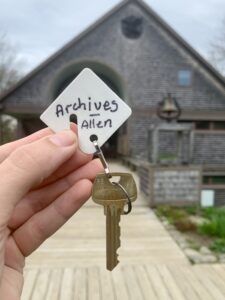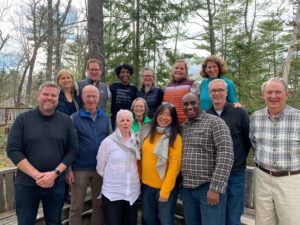Human beings domesticated mallard ducks about 4,000 years ago, and today there are more than 10 million of them living in North America, but for the past 22 years, a single mallard has held many thousands of children in thrall: Peepers, who sadly passed away last Friday.

“Peepers was one of our most charismatic ambassadors,” says Emma Balazs, Traveling Natural History Program coordinator. “He delighted audiences. He was so active–always exploring the world with his beak. With no paws or hands to do this exploration, his beak was always busy.”
Peepers came to us as a tiny duckling in June 1997 from Brooks Feed and Farm Supply Store in Brunswick, a half-hour from Chewonki. Someone had ordered a domesticated mallard and but never claimed it. The Brooks staff, stuck with an orphan, called Chewonki.
The lucky little duck soon settled into the aviary on Chewonki Neck and was given a name. Kyle Shute, son of Chewonki Vice President Greg Shute and former staff naturalist Lynne Flaccus, named him Peepers.
Peepers was “always super-vocal,” says Balazs. “He’d hear our footfalls on the path leading to his aviary and would start talking.” He never had a mallard mate but often did his mating display for the staff during mating season. “Even a domesticated animal has that instinct,” notes Balazs.
Former Chewonki educator Prema Long once drove more than four hours with Peepers to present a program at a school in Presque Isle, Maine. Concerned that a long round trip in a day might tire him, Long checked into a motel, where Peepers spent the night in the bathtub.
“He loved, loved, loved when we refilled his tub,” recalls Balazs. “He couldn’t get in there fast enough when he saw the fresh water. He loved getting in the empty tub first and having us fill it up with him in it.”
“He delighted many, many students and staff,” says Balazs. “Most recently, he was the star of our biomimicry program.” His webbed feet have also been a feature in lessons about adaptations. “Mallards have a cool adaptation,” she explains. “They have countercurrent heat exchange in their feet.”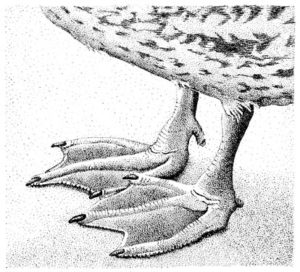
In a duck’s legs, warm blood coming from its heart runs close to cooled blood coming from its feet, transferring heat to the cooler blood. This reduces heat loss through the feet, maintaining heat in the duck’s core even when it is swimming in icy water or standing on ice or snow.
22 years is an admirable lifespan for a domesticated mallard. Peepers led the life of a teacher, inspiring many thousands of school children in his career. We will miss him.



